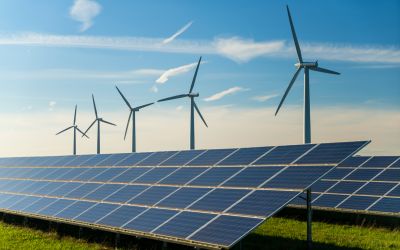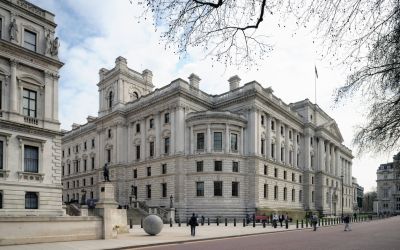Britain launches new drive for offshore wind power
The British government opened a major new phase on Wednesday in its drive for renewable energy, calling for bids to build up to 25 gigawatts of offshore wind turbines, triple the amount already in the pipeline, by 2020.
The British government opened a major new phase on Wednesday in its drive for renewable energy, calling for bids to build up to 25 gigawatts of offshore wind turbines, triple the amount already in the pipeline, by 2020.
The announcement by the Crown Estate, which manages all property owned by the monarch including the seabed around Britain, was welcomed by British Wind Energy Association chairman Adam Bruce as "impressively bold."
Under rounds one and two of offshore renewable power generation leasing program a total of eight gigawatts of wind turbines are under development. Round three announced on Wednesday would raise that to 33 gigawatts, equivalent to one quarter of Britain's electricity supply.
"The expansion of wind energy is already a real success story for the UK. We will shortly become the leading country in the world in terms of the number of wind farms operating offshore. The potential for round three will add to that success," said Energy Minister Malcolm Wicks.
He said he hoped the announcement, coupled with changes in planning regulations going through parliament, would give industry confidence to make the necessary investments.
The BWEA said that if round three met its goal it would mean some 5,000 more wind turbines being built in the 11 sites around the British coastline identified by the Crown Estate.
Rob Hastings, head of the Crown Estate's marine section, said he anticipated investment of 60 to 80 billion pounds ($157.3 billion) would be needed to hit the round three goal. "There is obviously a big mountain ahead to scale," Richard Lambert, head of the Confederation of British Industry, told the BWEA's annual offshore conference, referring to Shell's recent decision to pull out of the major London Array wind farm.
To help the process the Crown Estate said it would meet up to half the pre-construction costs, including getting planning consents and enabling works to speed delivery.
It would not be involved in construction or operation. Potential applicants, which may be individual firms or consortiums, can bid for licenses on the 11 sites which range from north eastern Scotland to Cumbria with the winner being granted sole development rights on the site.
Hastings said he anticipated the bidding and approval process to end by 2015 with construction to be completed by 2020, the European Union's target date for 20 percent of the bloc's energy to be coming from renewables.
Britain's share of this is set to be around 15 percent and the BWEA has said that would mean the country getting up to 40 percent of its electricity from wind by that date, a goal it said was tough but achievable.
"We are on the cusp of phenomenal growth," said BWEA chief executive Maria McCaffery. "People with eye-watering amounts of money to invest are coming to talk to us. What we need is consistent government policy."
The association said that such was the growth of on and offshore wind power that within five years it would provide more electricity than nuclear power as the country's aged nuclear plants are retired.
Nuclear power provides 19 percent of Britain's electricity, a percentage that is set to decline rapidly in the next few years in the absence of the new build the government says the country urgently needs.
Source: Reuters



_400_250_s_c1.png)


_400_250_80_s_c1.jpg)